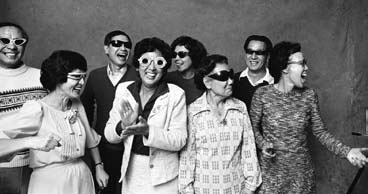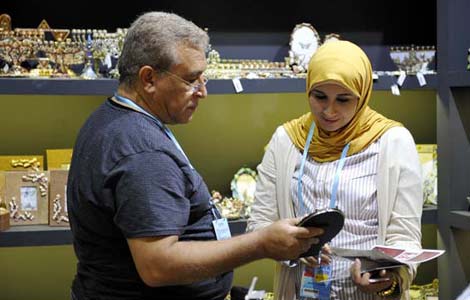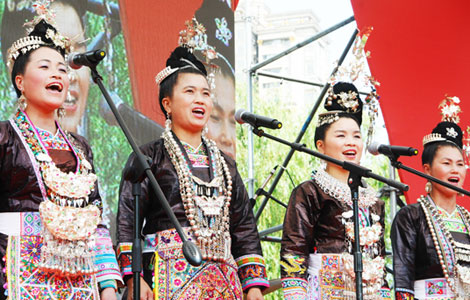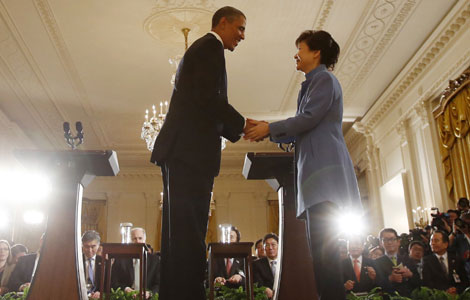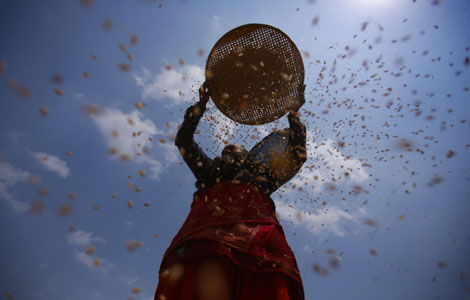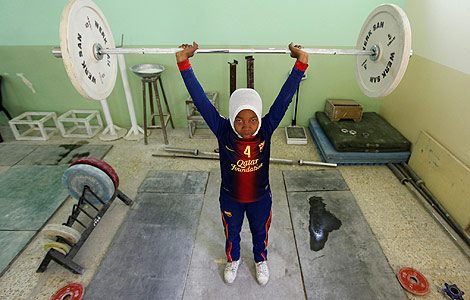At home with the Jangs, the 'Chinese Brady Bunch'
Updated: 2013-05-10 11:18
By Kelly Chung Dawson in New York (China Daily)
|
||||||||
|
A photo showing Michael Jang's family members in glasses. The exhibition of photos taken by Jang 40 years ago is a portrayal of a Chinese-American family's American dream. Provided to China Daily |
In the summer of 1973, a college student named Michael Jang took a photography workshop in San Francisco. His classroom assignments required that he take photos of the people around him, and his Chinese-American family quickly became his favorite subject.
He found inspiration in the intimacy and humor of their ordinary lives, as they set off fireworks on July 4, played with pets and simply sat around their suburban home.
In the intervening decades, the negatives for those photos sat in boxes as Jang went on to become a professional photographer, working with notable names such as Ronald Reagan and Jimi Hendrix.
But this month the images that he created 40 years ago are finally being recognized in a new exhibition titled "The Jangs" at Stephen Wirtz Gallery in San Francisco.
"Someone saw these photos and asked me, 'Is your family nuts?'" Jang joked in an interview with China Daily. "And the answer is 'Yes', but in all fairness if someone else had come into our family and photographed us it would have been a completely different tone. It was my vision and experience of that reality, and this is definitely one of those exhibitions that'll make you smile and even laugh. I mean, there's a shag rug in the bathroom, for god's sake."
Jang's grandparents arrived in the US more than 100 years ago, and subsequent generations have made a living as merchants in the dry goods business. His family has reacted to the new exhibition with "overwhelming" enjoyment and nostalgia, he said.
Stephen Wirtz, owner of the gallery, said that although the humor of the work is its most obvious attribute, the subject matter is equally important in terms of introducing audiences to an under-exposed segment of American history.
"What Michael was photographing was a part of America that most people miss today," he said. "This was a Chinese-American family that lived the American dream in the 1970s, and I think it's important that audiences can see them as people who don't feel like strangers. More than just humor, underneath is a far more important issue - the portrayal of Chinese-Americans as just another group of Americans living out their lives in this country.
"And this family in particular appears so well-adjusted and happy, that they're almost a Chinese Brady Brunch," he said with a laugh.
Sandra Phillips, the curator of photography at the San Francisco Museum of Modern Art, which initially acquired Jang's family series, described the work as both modest and profound.
"The thing about Michael's work is that it's completely Michael - just this Chinese guy looking at his family, and who they are," she said. "The subject matter is not one of earth-shaking ambition, but the photos are wild and incredibly unique, and an expression of a sensibility that is informed by his heritage.
"The Chinese-American middle-class culture is relatively unknown to the rest of the world, but these photos are not primarily sociological in focus. They're interesting because, on top of that, they're also forgiving and loving and imaginative."
Wirtz compared Jang's photographs to those of the renowned street photographer Garry Winogrand, whose work is coincidentally on exhibition at the San Francisco Museum of Modern Art. Winogrand's work is noted for its informal snapshot-style documentation of everyday life.
But seeing the two exhibitions in tandem also makes their differences apparent, Wirtz said. While Winogrand focused on the expression of a certain alienation of the times, Jang's work is a celebration of human connection, he said.
Jang hopes that his photos will prove important for their documentation of the Chinese-American experience. He expects to release more photos in the next few years, he said.
"I want people to see that no matter what land our ancestors originally came from, we are here now and we're Americans," he said.
Although his family has naturally become a little less Chinese with each generation, he has always been conscious of his heritage, he said. That link is most evident in his lifelong study of tai chi. He spent a year in his 20s studying the art in Taiwan.
"The philosophy and practice of tai chi makes me feel deeply connected to Chinese culture," he said. "It's this quiet power. When you practice it, you become centered; you can eliminate distractions, and focus whether you're simply talking to someone or in my case, taking a photograph."
The Jangs exhibition runs until July 13.
(China Daily 05/10/2013 page11)
Most Viewed
Editor's Picks

|

|
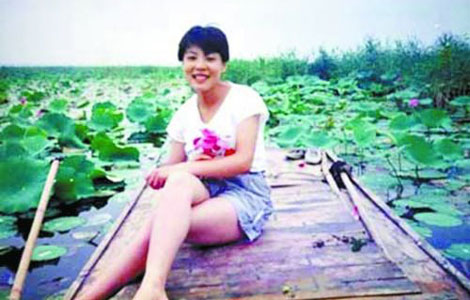
|

|

|
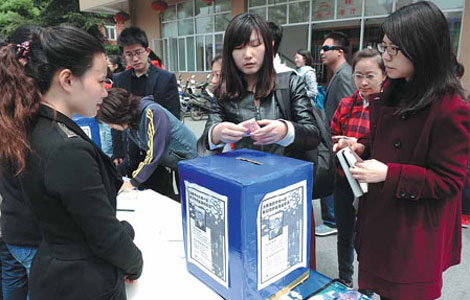
|
Today's Top News
US envoy on DPRK to visit ROK, China, Japan
Domestic violence by men 'shocking': survey
Producer Price Index continues to decline
Director accused of violating family planning policy
TCM seeks cure for false ads
No 'superbug' gonorrhea detected
Soil pollution data remains secret
Japan protests Okinawa report
US Weekly

|

|
